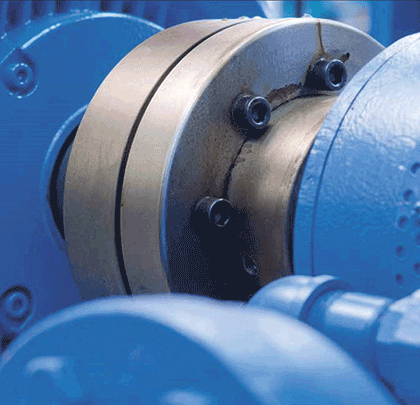Common attempts at more accurate alignment often produce poor results. Devices such as dial gauges are sometimes employed by in-house maintenance managers to try to achieve better alignment. However, using dial indicators requires complicated calculations and careful, highly experienced users. They demand painstaking, cumbersome, and lengthy set up, meticulous checking and re-checking of mechanical linkages, positioning, perpendicularity, and squareness, work that can all too easily be overwhelmed and wasted by a sticking dial hand or too low resolution. Competent use of these kind of meters is easily disrupted by human factors. Simple reading errors or the smallest imprecision in set up or adjustment can make obtaining accurate results impossible. Advances in alignment technology now eliminate the errors inherent in old-fashioned dial indicators. Laser systems for precision shaft alignment produce error-free and accurate measurements with a resolution as fine as one micron (0.00004 inches).

Readings can be taken at any desired position while eliminating problems from sagging brackets, tilted axles, loose linkages, and human errors. With laser alignment, there is no need to disassemble couplings or to take readings at fixed, predetermined locations. Laser results are easily repeatable and measure alignment both horizontally and vertically in one shot. Moreover, lasers can be used to evaluate alignment while a machine is actually running! Live evaluation means that true operating conditions can be precisely and accurately measured and adjusted.
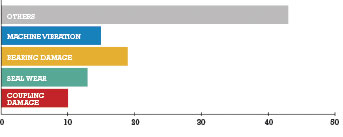
Most common effects of misalignment
WARNING SIGNS OF MISALIGNMENT
It’s not always easy to detect misalignment on machines in operation. One good investigative option is to employ equipment analysis that measures vibration or temperature increase. Vibration monitoring or thermography can help reveal a misalignment condition before wear or damage occurs.
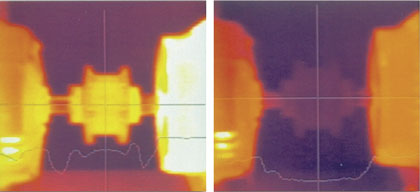
Without advanced technical instrumentation, there are signals that indicate an immediate and urgent need for precision laser alignment of equipment. Such signals include:
- Excessive vibration
- Increased temperature, especially at critical junctions
- Loose or broken coupling bolts
- Loose shim packs or dowel pins
- Excessive oil leakage at bearing seals
- Excessive wear or coupling failures
- Broken shafts or cracking close to bearings or coupling hubs
- Designed coupling indicators such as the formation of rubber powder inside coupling shrouds
- Shortened machine life
Observation of any of these conditions means that the affected machines are not operating as effectively or efficiently as possible and that an alignment service check is overdue.
HIDDEN COSTS OF MISALIGNMENT
Misalignment is expensive. In fact, misalignment can cost millions. Evidence suggests that more than 50 percent of machine breakdowns can be directly attributed to misalignment. Excessive vibrations, worn or damaged bearings, leaky or cracked seals, damage to couplings or shafts, increased bearing loads, all attributable to misalignment, lead to unscheduled work stoppages, delays, and lost production. They waste machine time, man-hours, and money. They shorten machine life and reduce quality. And they waste energy. Energy expenses may be one of the most significant and yet overlooked costs of misalignment.
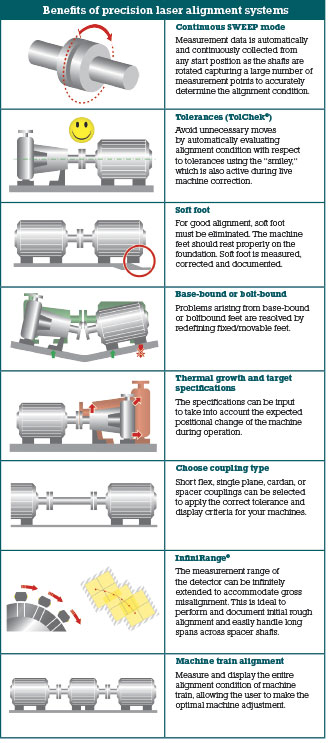
PRECISION ALIGNMENT SAVES ENERGY
Shaft misalignment has a startlingly large impact on energy consumption. Independent studies have demonstrated that misalignment may significantly increase energy usage and cost.
In one academic study conducted over a six-week period of normal operation, researchers evaluated the influence of alignment on electrical energy consumption at a chemical processing plant. At the start of the study, they precisely aligned, carefully balanced, and refitted the test machines with new bearings. Controlling for coupling style, the researchers adjusted the alignment of the tested machines at set intervals. Misalignment was gradually increased, and the resulting impact on power usage was recorded. In order to simulate normal operating conditions, the study monitored the amount of power drawn over multiple days for each setting. The results of this study demonstrated that within normal operating parameters energy consumption increased directly with the degree of machine alignment. The researchers found that using a laser alignment system to align machines within precise tolerances across the plant would reduce energy consumption by as much as 10 percent and, evaluated conservatively, save more than $100,000 per year.
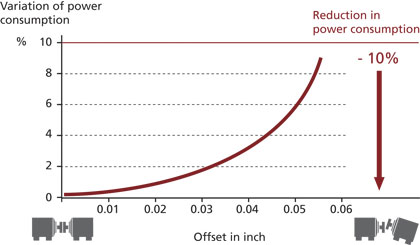
Power consumption in relation to offset. Courtesy of ® ICI PLC
To calculate energy savings from precision alignment, there are a number of factors to consider. The degree of initial misalignment, the number and wattage of the aligned machines, the relevant number of operating hours per year, the type of coupling involved, and the cost of power all impact power usage. For example, studies show that a single circulating pump with a 100 horsepower motor running at 3000 RPMs and operating with a typical offset misalignment of 30 mils will use 1.68 percent more power than the same pump that is precisely aligned to within 2 mils.
A LOOK AHEAD
Next month, in part 3 of this series, we will conclude by examining the necessity of a functional precision alignment program, specifically how savings will begin to accrue whenever an alignment program begins, whether at initial commissioning of equipment or after machines are already in service. ◆
With many years of experience in industries, processes, and applications PRUFTECHNIK offers innovative and customer-oriented solutions for maintenance and quality assurance. For more information, email usa@pruftechnik.com or visit www.pruftechnik.com.
____________________________________________
MODERN PUMPING TODAY, June 2017
Did you enjoy this article?
Subscribe to the FREE Digital Edition of Modern Pumping Today Magazine!
![]()


